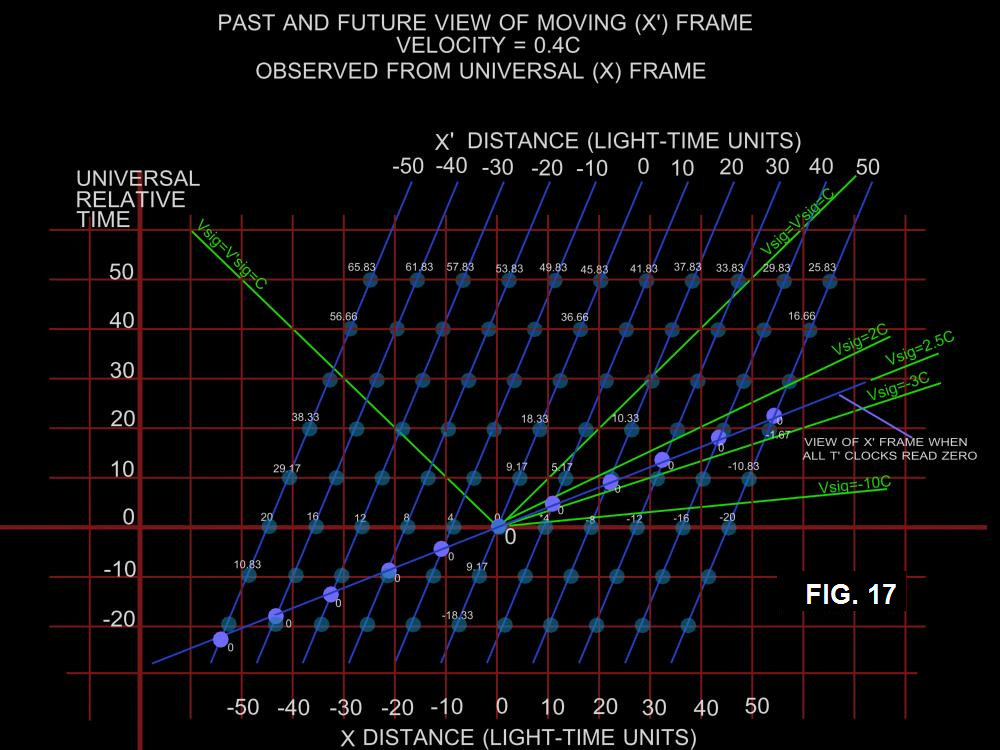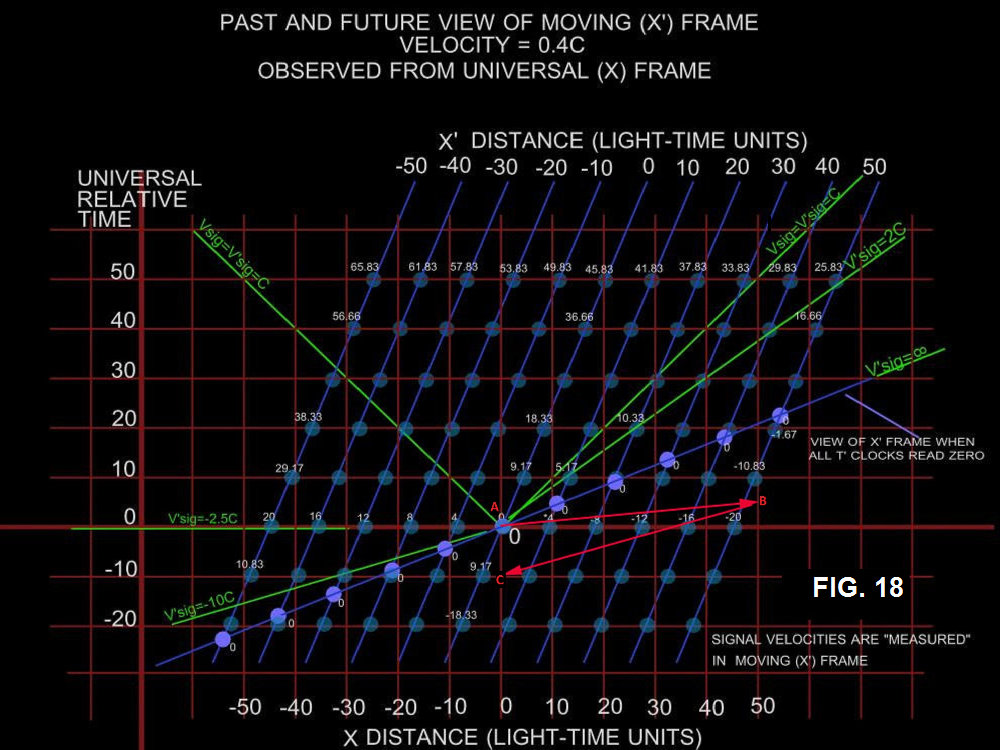| 8 | ||||||||||||||||||||
| NEXT PAGE | ||||||||||||||||||||
| FERMI'S QUESTION HOME | ||||||||||||||||||||
| PREVIOUS PAGE | ||||||||||||||||||||
| FTL SIGNALS IN ONE FRAME AS SEEN IN ANOTHER FRAME | ||||||||||||||||||||
|
In Fig. 17 we show, in green, the time lines of signals emanating from our origin with various velocities measured in our frame of reference. We are showing “Faster Than Light”, FTL, signals as though they are real (see the strobe light analogy earlier). Note the signal shown going in the plus X direction at 2.5 times the speed of light. (It is seen to travel 50 X-distance units in 20 time-units). Note that that signal lines up with the blue line which represents those clocks in the moving frame which have a zero reading. Thus this signal, which is moving at 2.5C in our frame is also a signal which is seen in the moving frame where every clock has the same reading, zero. That means that this signal is moving infinitely fast in the moving frame. This is another, more convenient view, of what was discussed earlier. The 2.5C velocity in this case is the negative reciprocal of the relative velocity of the two frames, 0.4C. (From the viewpoint of the moving frame, our frame is moving along the negative X’ direction). Next, consider Fig. 18. Here we show the plots of signals of various speeds which were sent on their way from the moving system’s origin when the clock there read zero. The speeds of the signals, V’, shown in Fig. 18, are speeds measured in the moving frame. Those speeds, except for the speed of light, C, will always be different when viewed in a different frame. Of interest in Fig. 18 is the fact that any signal emanating in the moving frame going in the increasing X’ direction will always move up, in the direction of increasing time. That is to say those signals move into our future. However, some FTL signals moving left are seen going into our past. In particular, a signal going left in the moving frame with a velocity of 2.5C will appear in our frame as infinitely fast going left. Furthermore, any signal greater than 2.5C going left in the moving frame will be seen going backward in time in our frame! Thus we can conclude that by using two different signals traveling at two different speeds (each greater than 2.5C) transmitted from the moving frame’s origin, communication is possible between two different points in time at the same X location! As an example: Using Fig. 17; information in the stationary frame, at time = 0 and X = 0, a v=10c tachyon, is sent to the right. The signal is received at another location in the moving frame at about +50 distance units and at about +5 URT's (universal relative time units). The received information is then returned (see Fig. 18) with a v=-10c tachyon going left in the moving frame. The slope of the tachyon for the reverse trip is greater than the outgoing trip and the return information travels the reverse 50 distance units in about negative 15 URT's thus arriving about 10 URT's before it was sent! (Note red signal lines in Fig. 18). |
||||||||||||||||||||
| Thus, this paradox provides a strong argument against the existence of FTL signals. Sort of. There is however a loophole. A very narrow one. Of all the possible infinite number of FTL signals, there is a single one for which the above presented time paradox does not exist. If it were possible to make a case for a special frame of reference, a universal frame which encompasses the entire universe, and if it were also possible to generate an infinitely fast signal in only that frame, then it can be shown that the general injunction against FTL signals would not apply in just that case. | ||||||||||||||||||||

|
||||||||||||||||||||

|
||||||||||||||||||||
| FERMI'S QUESTION HOME | ||||||||||||||||||||
| NEXT PAGE | ||||||||||||||||||||
| PREVIOUS PAGE | ||||||||||||||||||||